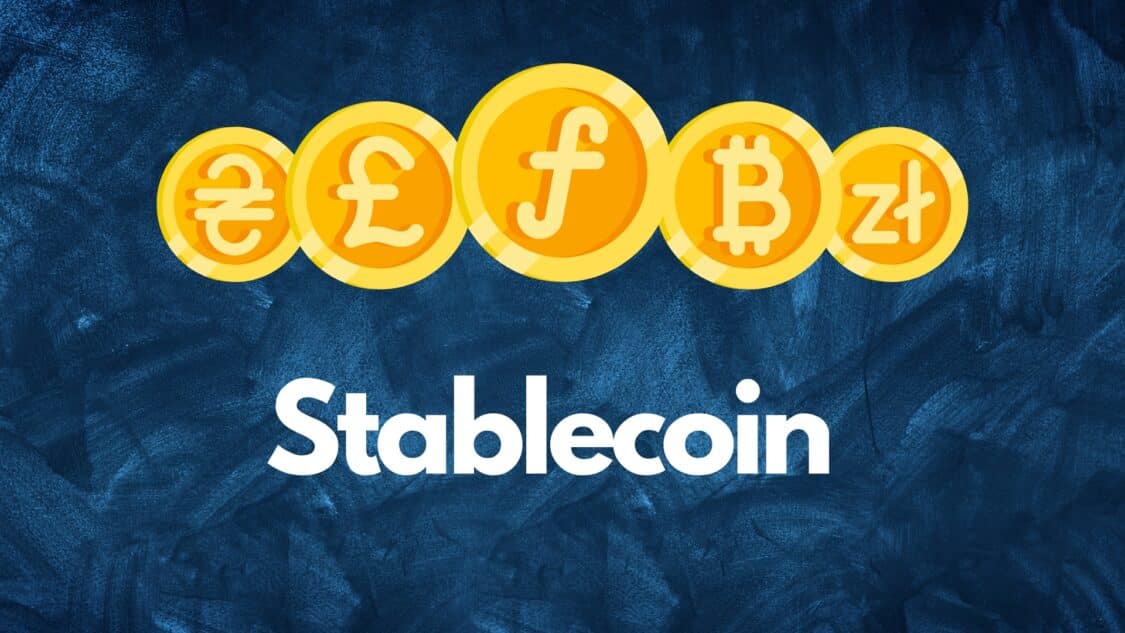This article will delve deep into Stablecoin advantages and disadvantages. Stablecoins, as their name puts forth, is a class of cryptocurrency that offers price stability. It can be done using algorithms or backing up the transaction with tangible assets.

The year 2014 was the introduction of the first stablecoin. Through the years, it has become popular because it offers the speed and security of a blockchain network and takes volatility much lower than it is in most forms of cryptocurrencies. Stabelcoins are a form of fiat currency that is blockchain-based. This implies that they are blockchain-friendly and relevant in smart contracts. It is a stable asset and can serve as a good store of value.

What are the Stablecoin advantages and disadvantages?
Advantages:
Stablecoins aim to hold a stable value by pegging the coins to a specific asset or a group of assets, like fiat currencies or commodities. This stability turns them into a reliable source of exchange amid volatile cryptocurrencies.
They offer a faster and more cost-effective option for cross-border transactions than traditional banking. This asset enables individuals and businesses to send and receive funds globally with lower fees.
Stablecoins can deliver financial services to unemployed consumers. People in neglected regions can engage in global financial systems, perform transactions, and hold value if they can access stable digital currencies.
Stablecoins built on blockchain technology offer features, such as smart contracts enhancing the functionality of traditional fiat currencies. Automation, programmable payments, and the development of decentralized financial applications are all made possible by these programmable features.
They offer advantages of both privacy and security to their users. Employing a blockchain technology foundation for stablecoins results in unalterable and open transaction records, thereby decreasing the occurrence of deception and enhancing trust within transactions. Furthermore, they afford individuals more authority over their personal financial information.
Disadvantages:
Some coins are issued and controlled by centralized entities, which can present counterparty risks. Users must believe the issuer has adequate funds to back the stablecoin’s value.
They function within a regulatory framework that is constantly developing. Based on how they are created and released, stablecoins could be subject to scrutiny by regulations and may encounter obstacles regarding compliance with financial laws and measures against money laundering.
The coinss that are pegged to a single asset are at risk. The asset’s value can fluctuate, potentially affecting the stability of the stablecoin. The depreciation of the underlying asset may decrease the worth of the stablecoin.
While they have gained popularity over time, their adoption still needs to be improved compared to traditional fiat currencies. Blockchain-based coins may encounter technical problems with scalability, network congestion, and possible weaknesses in smart contracts.

How do they maintain price stability?
They maintain their price stability through several mechanisms that differ depending on the type of stablecoin. A common approach is seen in fiat-collateralized stablecoins. These coins are backed by fiat currency reserves, like the US dollar or the euro, held in bank accounts. Each token issued represents a claim on the underlying fiat currency reserve. The issuer ensures stability by having a 1:1 ratio between the stablecoin tokens in circulation and the fiat currency.
An algorithmic stablecoin, however, holds price stability by employing algorithms and smart contracts. These coins use algorithmic mechanisms to regulate their token allocation according to market conditions and prevailing demand.
Finally, commodity-backed stablecoins ensure price stability by being backed by an actual asset, such as gold or other commodities. These stablecoins are supported by reserves of the primary asset, and their worth is associated with the asset’s price. The continuous process of audits and validations ensures that the funds held are adequate to maintain pricing consistency.
They employ different mechanisms to maintain price stability through fiat currency reserves, algorithmic controls, or physical asset backing. This process instils trust in users, allowing stablecoins to operate as dependable means of exchange and store of value within the cryptocurrency sphere.
Are there any risks?
Yes, users should be aware of the risks associated with using stablecoins. One risk is the potential for regulatory challenges and uncertainty. They exist in a rapidly evolving regulatory landscape, and the need for clear and comprehensive regulations specific to stablecoins can create regulatory and compliance risks. Moreover, stablecoins are susceptible to technical flaws and the dangers of cybersecurity. Stablecoin holdings may be lost or stolen due to hacking occurrences or smart contract errors. Stablecoins may pose a counterparty risk if they depend on a third-party or centralized entity to back their reserves.
These entities pose a threat of going bankrupt, putting user funds at risk of loss. Finally, stablecoins could encounter liquidity problems, particularly during market turmoil or disturbances. The incapacity of users to convert stablecoins into their respective underlying assets or fiat money may hinder their ability to withdraw from their positions or utilize their funds when necessary. Individuals must assess potential risks and execute exhaustive research before investing in stablecoins.
What are some key considerations when choosing a stablecoin?
Firstly, it is crucial to understand the stability mechanism employed by the stablecoin. As discussed above, Stablecoins aim to maintain a stable value against a reference asset. The stability mechanism for stabelcoins can vary. An important consideration is whether the stability mechanism is transparent, reliable, and audited by reputable third parties.
Secondly, it’s crucial to assess the level of decentralization and trustworthiness of the stablecoin. Some are under decentralized blockchain platforms, ensuring transparency and reducing counterparty risk. If one governing body manages operations, there is a possibility of vulnerability in case this authority fails to act responsibly. Assessing your desired amount of oversight and clarity for stablecoins is essential since it can significantly influence their dependability and safety.
Thirdly, assess the track record and reputation of the stablecoin issuer. Stablecoins that have the support of trustworthy institutions or established organizations can provide enhanced trustworthiness and credibility. To evaluate the stablecoin’s ability to remain stable for an extended period, investigate the issuer’s background, financial stability, and adherence to regulatory requirements.
It’s also helpful to evaluate the liquidity and adoption of the stablecoin. A widely adopted stablecoin with deep liquidity will likely offer ease of use and accessibility. Check whether the stablecoin has been included in major digital currency exchanges and has gained widespread acceptance. Increased liquidity can make the process of converting to and from various digital or traditional currencies much simpler.
Furthermore, consider the risks associated with stablecoins that we discussed above. Examine your risk tolerance and ensure it matches the potential dangers of the stablecoin. Finally, analyze the stablecoin’s functioning and intended use. Some stablecoins are designed for specific applications, such as facilitating cross-border transactions or acting as a medium of exchange inside a particular ecosystem. Check if the stablecoin’s features correspond to your intended use and requirements.
What’s the difference between stablecoins and bitcoin or any other crypto asset?
Stablecoins and other crypto assets, such as Bitcoin, differ in their purpose and value stability. Stablecoins are intended to keep a consistent value compared to a reference asset. This makes them a suitable option for transactions and as a store of value. Their objective is to reduce fluctuations in cryptocurrency prices and provide steadiness throughout the digital currency community.
In contrast, digital currencies such as Bitcoin are recognized for their unstable prices and are commonly utilized as speculative ventures or to preserve long-term worth. Their worth is based on the market’s requirements, and they do not possess intrinsic stability. Furthermore, stablecoins frequently implement measures to support their value or regulate circulation, whereas cryptocurrencies such as Bitcoin rely on decentralized networks and market forces.
What role do stablecoins play in decentralized finance (DeFi) applications?
Stablecoins play a crucial and multifaceted role in (DeFi) applications, contributing to the growth and functionality of the ecosystem. Initially, stablecoins functioned as a dependable means of exchange within Decentralized Finance (DeFi) protocols, proffering liquidity and serving as fundamental trading pairs on decentralized exchanges (DEXs). The stability of cryptocurrencies and tokens facilitates seamless transitions between digital assets while mitigating exposure to price volatility that characterizes unstable options.
Secondly, they are widely used as collateral in DeFi lending platforms. Users can hold their stablecoins as collateral to borrow other assets, such as cryptocurrencies or tokens. The stability of these coins ensures that the collateral value remains consistent throughout the lending period, decreasing the risk for both borrowers and lenders.
Furthermore, they play a significant role in yield farming and staking strategies within DeFi.
Users can earn additional rewards or interest by depositing stablecoins into liquidity pools or staking platforms. They provide a reliable and low-risk option for users to participate in these strategies, offering stability while providing passive income.
Closing Thoughts – Stablecoin advantages and disadvantages:
In conclusion, they provide several advantages that make them appealing in cryptocurrencies. Their price stability makes the asset a reliable medium of exchange and store of value. However, it is essential to consider the stablecoin advantages and disadvantages. Centralized stablecoins carry counterparty and regulatory risks, requiring trust in the issuing entity and compliance with evolving regulations. The reliance on a single asset for stability raises the risk of value fluctuations, potentially impacting the stablecoin’s stability. Limited adoption, technical challenges, and the evolving regulatory landscape pose additional considerations.
As the market continues to develop, it is essential to carefully assess each coin’s specific features, mechanisms, and risks. Understanding the advantages and disadvantages allows users and investors to make informed decisions and navigate the rapidly changing landscape of stablecoins.




